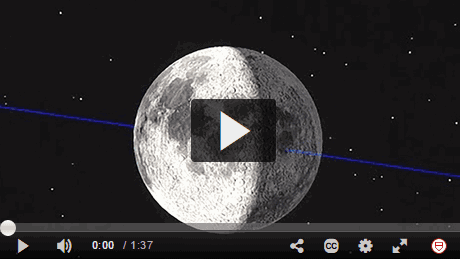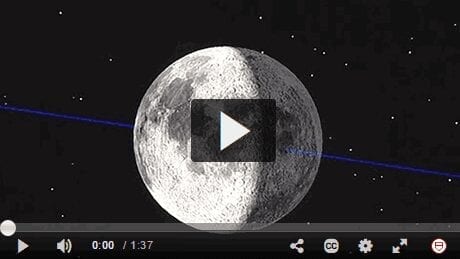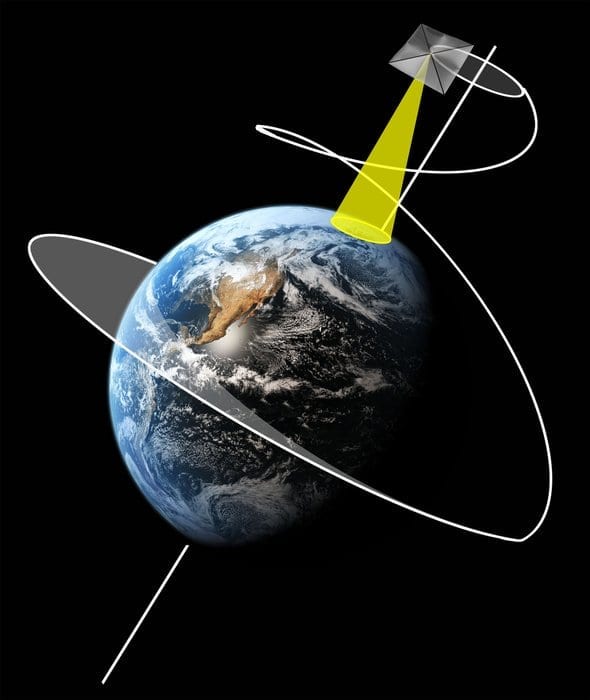
A satellite propelled by the Earth’s most abundant natural resource? Yes, it’s true.
Cislunar Explorers, a team of Cornell graduate and undergraduate students guided by Mason Peck, a former senior official at NASA and associate professor of mechanical and aerospace engineering, is attempting to boldly go where no CubeSat team has gone before: around the moon.
Not only is Peck’s group attempting to make a first-ever moon orbit with a satellite no bigger than a cereal box, made entirely with off-the-shelf materials, it’s doing so with propellant that you can obtain simply by turning on a faucet.
“This has a very important goal, and that is to demonstrate that you can use water as a propellant,” said Peck, who served as NASA’s chief technologist in 2012-13.
The Cislunar Explorers – cislunar means “between the Earth and the moon” – are in phase 3 of the four-phase Ground Tournament portion of the Cube Quest Challenge, sponsored by NASA’s Space Technology Mission Directorate Centennial Challenge Program.
The challenge is offering a total of $5.5 million to teams that meet the challenge objectives: designing, building and delivering flight-worthy, small satellites capable of advanced operations near and beyond the moon.
So far, Cornell’s group has two top-three finishes, including a first-place finish in Ground Tournament 2 in the spring. Both finishes earned them cash prizes – $20,000 for GT-1, $30,000 for GT-2, all reinvested into the project – as well as the ability to continue in the competition.
The top three finishers will earn a ride on NASA’s Space Launch System (SLS) rocket in early 2018, to compete in either the Deep Space Derby or the Lunar Derby. Cornell’s team will compete in the latter, which focuses on propulsion for small spacecraft and near-Earth communications.
And while winning the competition is the team’s main objective, it’s not the only one, Peck said.
“Of course, we’d like to be the first CubeSat to orbit the moon,” he said, “but even if we don’t, if we can successfully demonstrate that water is all you need to travel in space, we’ve gone a long way toward achieving some important goals.”
Going “massless”
Among them: Proving the ability to use resources available in space and ending our reliance on Earth-bound technologies to explore space further. “Massless” space exploration has been a goal of Peck’s for years.
“A lot of the mass we send into orbit these days is in the form of rockets – the only way we get anything into space,” Peck said. “But what if we could use what’s already there? If we could do that, if we could refuel spacecraft while they’re already in space, that means that we could go farther, probably faster, probably accomplish a lot more, and we wouldn’t rely on Earth for supplies.”
If all goes according to plan, the Cislunar Explorers’ CubeSat will take off aboard the SLS rocket and, somewhere between the Earth and moon, be jettisoned from the payload bay.
The satellite is actually two “L”-shaped halves, and they will split apart and gradually separate miles from each other, both on a course for the moon’s atmosphere. The twin satellites will spin as they go, their spin creating angular momentum – think a spinning top – that will help keep them from tumbling off course.
Cube Quest Challenge
Ground Tournament 3 Timeline
Sept. 21: Submissions due
Oct. 12-13: Face-to-face meeting with judges
Oct. 18: ‘Meet the Competition’ event
Oct. 24: Winner announcement
Ground Tournament 4 to end early 2017
Launch aboard NASA SLS (for top 3 in challenge) set for early 2018
With energy captured from the sun, water stored in tanks at the bottom of the “L” is electrolyzed into hydrogen and oxygen gases, which will combust in short bursts, 30 minutes to an hour apart, to provide propulsion. The spinning will also separate the liquid water from the combustible gases.
As the craft enters the moon’s gravitational pull, it will slow down and be swung into a distant Earth orbit, eventually reconnecting with the moon days later. It’s during this second rendezvous that Peck and his team plan for the satellite to be traveling slowly enough to be sucked into lunar orbit, some 6,200 miles above the surface of the moon.
In addition to the water-based propulsion, the other core technology to be demonstrated by the team is optical navigation, said project manager Kyle Doyle, a doctoral student in aerospace engineering.
According to Doyle, cameras onboard the craft will constantly take pictures of the sun, Earth and moon and compare their apparent sizes and separation with their ephemerides – where these bodies should be at the time the pictures were taken.
“Using fairly simple geometry, the spacecraft can say, ‘OK, I must be here, because these bodies look like this,’” Doyle said. “It’s very much like ancient explorers using the sun and moon to navigate. What’s old is new again.”
The competition is scheduled to end one year after the SLS launch.
“Even before the competition ends, I think we will already have been successful in another way – through bringing a number of students into this extraordinary experience,” Peck said. “Not many students get to launch their senior project, right?”
Learn more: Cornell’s quest: Make the first CubeSat to orbit the moon
The Latest on: Massless space exploration
[google_news title=”” keyword=”massless space exploration” num_posts=”10″ blurb_length=”0″ show_thumb=”left”]
via Google News
The Latest on: Massless space exploration
- NASA Selects 24 Projects to Advance Space Exploration Technologieson May 3, 2024 at 5:25 pm
NASA has selected 24 projects from 21 organizations to receive cooperative agreement notices for dual-use technology development to advance new technologies designed to support future exploration ...
- NASA chooses 9 companies for Mars Exploration Program concept studieson May 1, 2024 at 3:13 pm
Officials with the National Aeronautics and Space Administration will pay nine companies between $200,000 and $300,000 each to conduct a dozen tests to support future missions to Mars.
- A religious test for space exploration?on April 30, 2024 at 5:00 pm
In essence, the author is arguing that lawful space missions should be subject to the religious test of a single culture. The heart of the argument, however, really comes down to how we see our future ...
- Space Exploration Newson April 21, 2024 at 5:00 pm
Apr. 30, 2024 — NASA's James Webb Space Telescope has captured the sharpest infrared images to date of a zoomed-in portion of one of the most distinctive objects in our skies, the Horsehead Nebula.
- Space exploration: A luxury or a necessity?on April 16, 2024 at 9:06 am
Space exploration was the trigger that enabled us to develop and operate these technologies. And it doesn't stop there. Two birds, one stone The practice of medicine in remote areas also benefits ...
- Space explorationon April 14, 2024 at 5:00 pm
Agencies and scientists from around the world head to the UK to share space-exploration techniques. Researchers say the Winchcombe meteorite is "a remarkable piece of space history". The US ...
- 8 Games With the Most Realistic Space Explorationon April 8, 2024 at 5:00 pm
These games allow players to venture into the stars, providing a great sense of immersion with the depiction of space exploration and travel. One of the biggest and ever-growing mysteries of the ...
- Space Exploration newson December 25, 2023 at 12:39 pm
Parking is at a premium at the International Space Station, but NASA and SpaceX ... propulsion technology to facilitate future planetary exploration missions using small spacecraft.
- Space Explorationon May 15, 2023 at 10:41 am
ESA astronaut Alexander Gerst takes a selfie during an EVA outside the International Space Station in 2014. New research shows that when astronauts spend extended periods of time in space ...
via Bing News











